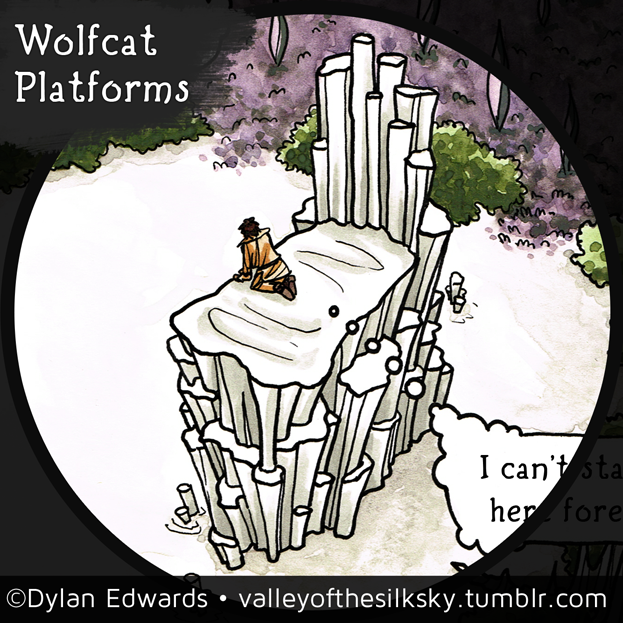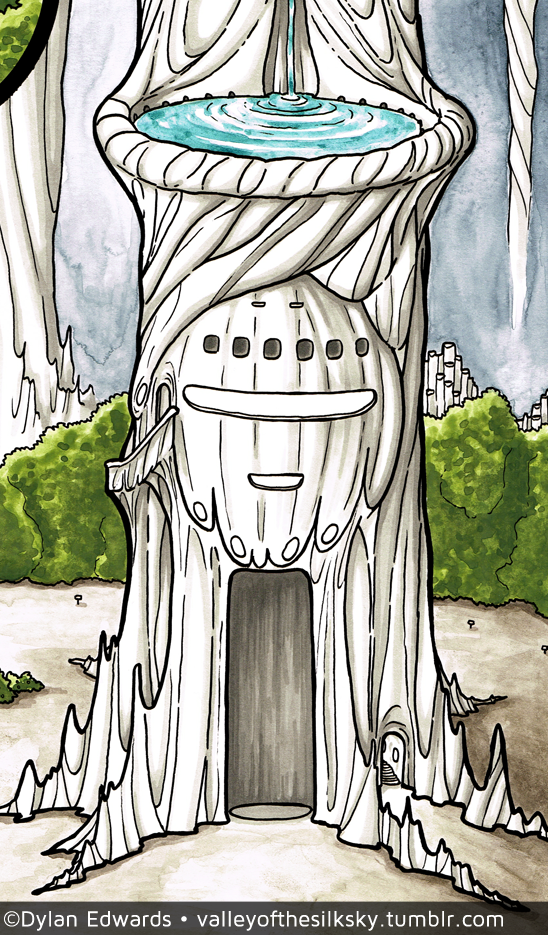 A wolfcat platform is a platform you climb to get away from wolfcats. How about that.
A wolfcat platform is a platform you climb to get away from wolfcats. How about that.
While the pillar structure itself is naturally-occurring, it has been augmented to accommodate an about-to-be-eaten person. You will typically find wolfcat platforms clustered near waystations.
The platform itself is about 20 feet up and is accessible only by climbing some steep pillars with narrow footholds. The pillars angle out slightly, making it extremely difficult for a four-legged, dog-footed creature to amble up. The large, flat area allows you to lay low enough to get out of the line of sight of the wolfcat. Once you’re out of sight you wait it out until the wolfcat loses interest and moves on.
The nearest waystation’s attendant works to keep the area clear around the platform so you can actually get to it should you need to. (The attendant does this work during daylight hours when wolfcats are less active, and carries with xer some repellent just to be on the safe side.)

 Waystations are a common feature of Muru Province, serving as safe ports of call throughout the wilderness. They’re generally roughly a day’s travel from one another or from a city or settlement, since it’s not really a good idea to sleep outside in Muru if you can help it.
Waystations are a common feature of Muru Province, serving as safe ports of call throughout the wilderness. They’re generally roughly a day’s travel from one another or from a city or settlement, since it’s not really a good idea to sleep outside in Muru if you can help it.